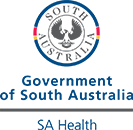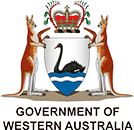Beach safety
Key facts
- Knowing how to keep safe at the beach is important.
- Always swim between the red and yellow flags on patrolled beaches.
- Look for signs at the entrance to the beach for local information.
- Always swim with someone else.
- Never swim after drinking alcohol or taking drugs.
The beach
Beaches are one of Australia's most recognisable and enjoyable features. This article gives information on beach safety to help prevent accidents and injuries.
If you get into trouble when swimming at the beach, try and stay calm and call for help. Save your energy by floating on your back — this will ensure you have the energy to stay afloat until help arrives.
Who are lifeguards and lifesavers?
Lifeguards and lifesavers are trained to supervise beachgoers. They provide advice about beach conditions.
Lifesavers will usually be wearing red and yellow, but this may change. You should note what uniform the lifesaving service at your beach is wearing. This will help you know who to look for in an emergency.
What do the beach safety flags mean?
Every beach has permanent and occasional hazards that you will need to look out for. Lifesaving services use safety flags to help show these hazards. The flags also show you the safe areas to swim in.
Lifesavers will put flags up on the beach each day. The position of the flags may change throughout the day as the conditions change.
A good rule is: NO FLAGS = NO SWIM.
Beach safety flags

A red and yellow flag tells you to swim between the flags.
They show the supervised area of the beach. This means that lifeguards are watching that area.
If there are no red and yellow flags, it means there is no supervision. Check with the lifeguards. If you are unsure, don't go into the water.

A red flag means that the beach is closed. There is no swimming, and you shouldn't enter the water.

A yellow flag means that caution is needed. You should be careful as there are hazards in the water. A yellow warning sign should be displayed nearby, showing what the hazard is — for example, large waves or jelly fish.

A black and white check flag shows where board riding and surfing is not allowed.
Beach safety sign images: Courtesy of Surf Lifesaving Association
What do the beach safety signs mean?
Beach safety signs are different shapes and colours. They tell you about the beach and the conditions.

Warning signs are diamond-shaped, yellow and black. They warn you about hazards at the beach. Hazards can be things like 'unexpected large waves' or 'swimming not advised'.

Regulatory signs are a red circle with a diagonal line through a black image. They tell you about prohibited activities at that beach. Prohibited activities could be things like 'no swimming' or 'no surfboard riding between the flags'.

Information signs are square-shaped and blue and white. They give information about features at that beach. Examples are 'patrolled beach' or 'surfboard riding is allowed'.

Safety signs are square-shaped and green and white. They show a safety provision nearby. They can also show safety advice such as 'emergency telephone', 'first aid' or 'lifesaving equipment'.
Beach safety sign images: Courtesy of Surf Lifesaving Association
Do I need to worry about rip currents?
Rip currents (sometimes just called a 'rip') are the main hazard on Australian beaches. Rips are strong currents that begin near the shore and run away from the beach. Being caught in a rip may feel like you are in a flowing river.
Not all rip currents flow directly out to sea. Some may run parallel to the beach before heading out to sea. Rips cause about 26 deaths every year. From 2023 to 2024, 35% of drowning deaths at beaches were related to rip currents.
How do I spot a rip?
There are a few signs that can help you spot a rip, such as:
- darker, deeper water, where less waves are breaking
- sandy-coloured water or white water behind where waves are breaking
- debris or seaweed floating out to sea
What do I do if I am caught in a rip?
If you find yourself in a rip, follow these steps:
- don't panic
- raise an arm straight up and call out for help
- float on your back with the current — it may return you to a shallow sandbank
- swim parallel to the beach or towards breaking waves until you escape the rip current
- do not swim against the rip, you will exhaust yourself
What should I know about waves and large surf?
Waves are one of the most enjoyable features of the beach and ocean. However, they change with different conditions. Waves at the beach may also be referred to as the 'surf' or 'swell'.
The surf can change very quickly at the beach. If you are in the ocean, you should always face the sea. This way you can see any large waves approaching.
If you are not sure if conditions are safe for swimming, ask a lifesaver or lifeguard for safety advice.
A wave 'breaks' when the swell reaches shallow water. This is when the wave curls over. There are 3 different ways that a wave can break.
Plunging and dumping waves
Plunging and dumping waves break suddenly. They often form a barrel shape. You may not see any white water until after they break.
They can knock you over and throw you to the bottom with great force. These waves usually occur at low tide where sandbanks are shallow.
Dumping waves can cause injuries to swimmers, particularly spinal and head injuries. You should never body surf on these waves.
Spilling waves
Spilling waves will have white water tumbling down the face of the wave (in front). They usually have less force, and are the safest waves for body surfing.
They are found on beaches and in bays where the sea floor slopes gradually. Sometimes they can be found near sandbanks at high tide.
Surging waves
If the water around the shore is deep, the waves may not break. These are called surging waves.
These waves are found in rocky areas around cliffs and where the beach drops off quickly. They can be very dangerous. They can knock you over and drag you back into deep water.
Large waves
Sometimes, waves at the beach can be quite large. This may depend on the type of beach and the wind at the time.
Surfing or swimming around large waves can be dangerous. It should only be attempted by experienced swimmers, between the red and yellow flags.
You should also avoid creek and river mouths when there is large surf. This is because the currents there are often stronger.
How can I keep my children safe at the beach?
Lifeguards and lifesavers watch all swimmers in the water. Parents and carers also need to watch their children at all times. You should:
- swim between the flags
- keep children within arms' reach at all times
- put children in bright swimming suits and rash shirts, which are easy to see
When you arrive at the beach, decide on an easy-to-find point, such as the lifeguard tower. Tell your child to go there if you get separated.
If you are going to the beach, read more about:
Why are alcohol, drugs and medicines dangerous at the beach?
Every year, people get into trouble on the beach and in the water because of alcohol. Drinking alcohol or taking illegal drugs and swimming is a dangerous combination, as these substances can:
- lead you to make poor choices
- make you less co-ordinated
- reduce your reaction time
- make you unable to control your body temperature
Some prescription medicines and over-the-counter medicines can also have side effects that may affect you in the water. Ask your doctor about any side effects before you visit the beach.
What about sharks and stingers?
Sharks
If someone is bitten by a shark, you should:
- remove the person from the water if it is safe to do so
- call triple zero (000) and ask for an ambulance
- apply pressure to the wound to help prevent blood loss
- provide CPR to the injured person, if needed
Sharks are one of the many types of creatures that live in the ocean.
Shark attacks are very rare. But there are ways to reduce your chance of being bitten by a shark, such as not swimming:
- in murky water
- after dusk, at night or before dawn
- alone
- while bleeding
- with your pets
Swimmers should come out of the water immediately if the lifeguards sound a shark alarm.
Stingrays
If you are stung by a stingray, call triple zero (000) for an ambulance. Run hot water over your sting or submerge it in hot water, being careful not to burn yourself. If the stingray's barb is still in the wound, do not remove it.
Stingrays are sea creatures with a flat body and a long tail. Most stingrays have a barb at the base of their tail for self-defence. They live all over Australia.
If you are stung by a stingray, you may:
- have a painful wound
- notice inflammation around the wound
- have nausea, diarrhoea, sweating and muscle cramps
When in shallow water, you can avoid being stung by shuffling your feet, to encourage any nearby stingray to swim away.
Jellyfish
Jellyfish are sea creatures that can cause a painful sting. Different jellyfish (stingers) are found in different locations in Australia. Read about jellyfish stings.
For more information, go to sea creature bites and stings.
CHECK YOUR SYMPTOMS — Use the Symptom Checker and find out if you need to seek medical help.
Why is rock fishing dangerous?
Do not jump in if someone is washed into the water — call triple zero (000) or go get help.
Many people enjoy rock fishing along the Australian coast. But it is one of Australia's most dangerous sports. The ocean and waves around rock platforms can make them unsafe.
To keep safe when rock fishing, it's important to be prepared. Make sure that you take the right gear with you. This includes:
- a life jacket
- shoes with non-slip soles
- light clothing
- a mobile phone
- a rope and float
You should fish only in places that you know are safe. It's important that you:
- never fish alone
- tell someone where you are going and when you'll be back
- are familiar with the tide and weather of the fishing spot
- don't fish in exposed areas when the sea is rough
- ask local people for advice
Once you arrive:
- spend at least half an hour watching the wind and wave action
- plan an escape route
- watch for slippery rocks, large waves and changes in the surf
- never turn your back on the sea
- if conditions worsen, find a calmer, more sheltered spot — or go home
How do spinal injuries happen at the beach?
Every year, people have accidents that result in spinal injuries. Spinal injuries can happen at the beach if you:
- are dumped headfirst by a wave into a sandbank, reef or surfboard
- dive headfirst into the water
- jump off rocks (sometimes called 'tombstoning')
Any neck soreness or pain should be treated as a potential spinal injury. Urgent medical attention is needed.
Resources and support
You can find more about beach and coastal safety on the Surf Life Saving website or the Royal Life Saving Australia website.
For more information on about Australian beaches, visit the Beachsafe website.
You can also call the healthdirect helpline on 1800 022 222 (known as NURSE-ON-CALL in Victoria). A registered nurse is available to speak with you 24 hours a day, 7 days a week.
Learn more here about the development and quality assurance of healthdirect content.
Last reviewed: November 2024















